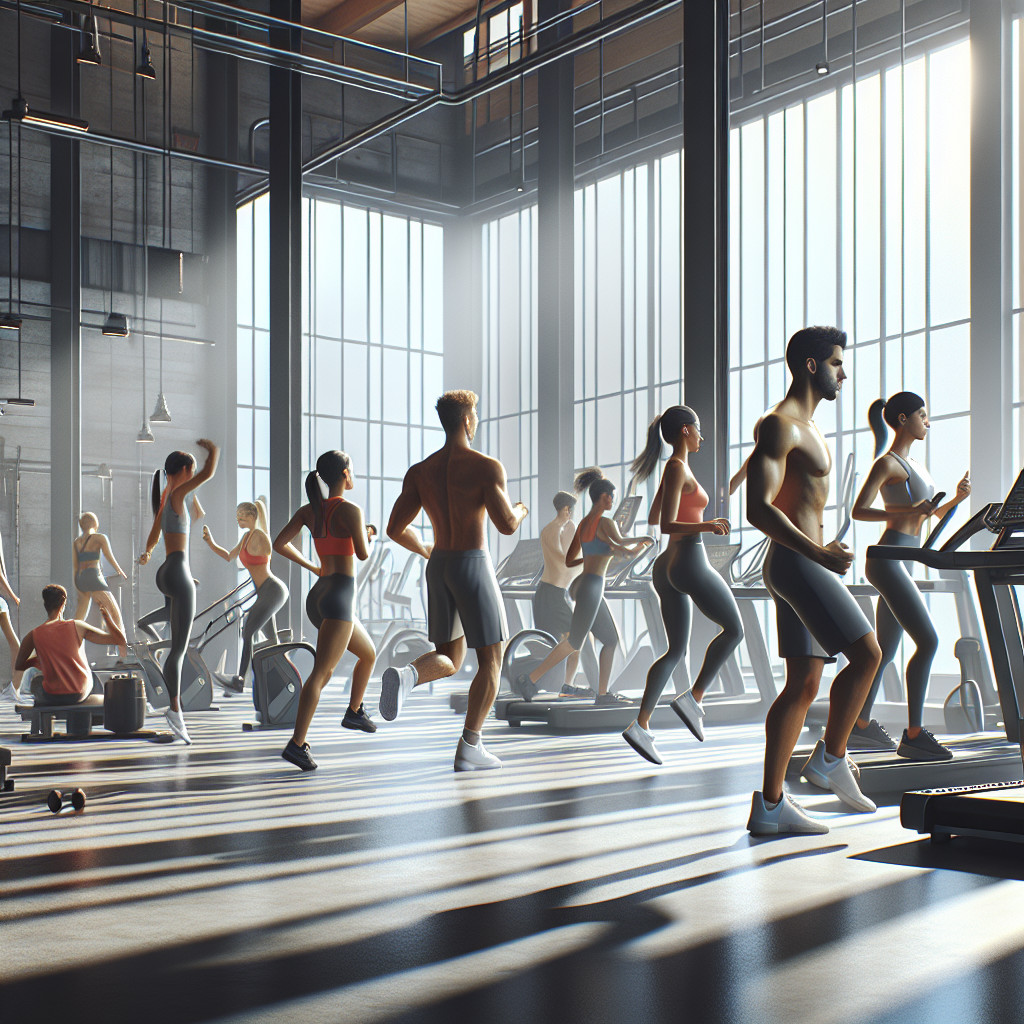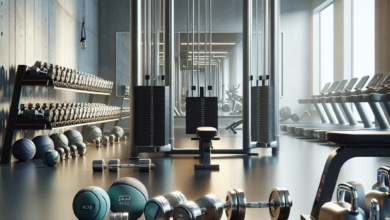Zermatt Neo Workout: Revolutionize Your Fitness Regime!

Welcome to the cutting-edge of fitness, where the Zermatt Neo Workout is rapidly gaining traction among fitness enthusiasts seeking to revolutionize their exercise routines. This innovative approach combines high-intensity interval training (HIIT) with functional movements and strength training, creating a comprehensive workout that targets multiple aspects of physical fitness. Explore More at Muscle Theory to dive deeper into this transformative fitness regime.
Whether you’re looking to shed unwanted pounds, build muscle, or improve your overall athletic performance, the Zermatt Neo Workout offers a structured yet dynamic pathway to achieving your goals. Its versatility and adaptability mean it can be tailored to suit a wide range of fitness levels and preferences, making it an inclusive option for gym-goers everywhere. By integrating the latest exercise science, this workout is designed to maximize efficiency and effectiveness, ensuring you get the most out of every sweat session.
Over the next sections, we will delve into the core components of the Zermatt Neo Workout, exploring its exercises, benefits, and practical tips for implementation. Stay tuned as we break down this fitness phenomenon and guide you on how to incorporate it into your routine for optimal results. Let’s embark on this journey to elevate your fitness to new heights with the Zermatt Neo Workout.
Unpacking the Zermatt Neo Workout Essentials
At its core, the Zermatt Neo Workout is a synergy of three crucial elements: cardiovascular endurance, muscular strength, and mobility. Each workout session is meticulously crafted to challenge these components through a series of exercises that are both scalable and progressive.
To begin, cardiovascular endurance is addressed through intense interval training segments. These bursts of high-intensity effort, interspersed with short recovery periods, push the heart rate to peak levels, effectively boosting aerobic capacity and calorie burn. Typical exercises might include sprinting, rowing, or high-speed cycling.
Following the cardio rush, strength training takes the spotlight. The Zermatt Neo Workout incorporates compound movements like squats, deadlifts, and overhead presses, which engage multiple muscle groups simultaneously. This strategy not only builds raw strength but also ensures a balanced development of the body’s musculature.
Mobility exercises are interwoven throughout the workout to enhance flexibility and range of motion. Dynamic stretching and functional movements, such as lunges and rotational twists, are employed to prevent injuries and improve overall performance. This holistic approach ensures that the body is equally fortified and agile.
To truly grasp the essence of the Zermatt Neo Workout, one must appreciate the importance of these essentials and their interconnectedness. As we progress further into the nuances of the workout, you’ll learn how to seamlessly integrate these elements into a robust fitness regimen that catires to your unique needs and goals.
Maximizing Gym Time with Zermatt Neo Techniques

The Zermatt Neo Workout is not only about the exercises you perform but also about the efficiency and intensity with which you execute them. To maximize gym time, adherents of the Zermatt Neo techniques are encouraged to focus on time under tension, supersets, and minimal rest intervals. These approaches are designed to create a high-density workout that delivers results without spending hours in the gym.
Time under tension refers to the duration a muscle is under strain during a set. By manipulating the tempo of exercises, such as adding a pause at the peak of a lift or slowing down the negative phase, you can significantly enhance muscle growth and endurance without increasing the amount of weight lifted.
Supersets consist of performing two exercises back-to-back with no rest in between, targeting either the same muscle group for intensity or opposing muscle groups for balance. This technique not only saves time but also elevates the heart rate, contributing to both strength gains and cardiovascular benefits.
Rest intervals are strategically reduced in the Zermatt Neo Workout. Shorter breaks between sets maintain the workout’s intensity and keep the heart rate elevated. By doing so, the body’s metabolic rate is stimulated, leading to increased calorie burn both during and after the session.
Integrating these Zermatt Neo techniques creates a potent workout that optimizes time spent in the gym. The result is a comprehensive routine that facilitates a quicker path to achieving fitness goals while also respecting the individual’s busy schedule. As we delve into the specific exercises that make up the Zermatt Neo Workout, remember that the magic lies in the method, not just the movement.
Nutritional Strategies to Complement the Zermatt Neo Regimen

Alongside the rigorous physical demands of the Zermatt Neo Workout, proper nutrition is paramount to ensure that the body has the necessary fuel to perform and recover. A tailored nutritional strategy can complement the intense training regimen by providing the right balance of macronutrients to support muscle growth and energy needs.
Protein intake is crucial for muscle repair and growth, and should be consumed in adequate amounts throughout the day. Aim for high-quality protein sources such as lean meats, fish, eggs, and plant-based options like legumes and tofu. Carbohydrates are equally important, as they serve as the body’s primary energy source. Complex carbohydrates like whole grains, fruits, and vegetables should be included in every meal to sustain workout performance and assist in muscle recovery.
Fats should not be neglected, as they play a significant role in hormone production and overall health. Sources of healthy fats, including avocados, nuts, seeds, and olive oil, contribute to satiety and provide a slow-burning energy source. Hydration is another critical component, especially when engaging in the high-intensity training of the Zermatt Neo Workout. Adequate water intake before, during, and after exercise ensures optimal performance and recovery.
Timing of meals and snacks can also enhance the effectiveness of the Zermatt Neo regimen. Consuming a combination of protein and carbohydrates before and after workouts can help fuel the body and kickstart the recovery process. Lastly, it’s important to listen to your body and adjust your nutritional intake based on your energy levels, workout intensity, and personal fitness goals.
Implementing these nutritional strategies will not only support the physical demands of the Zermatt Neo Workout but also promote overall well-being. With a solid nutritional foundation, the body is better equipped to handle the stress of exercise and recover more efficiently, paving the way for improved performance and results.
Tracking Progress and Setting Goals with Zermatt Neo

Embarking on the Zermatt Neo Workout journey requires a commitment not only to the routine itself but also to monitoring your progress. Tracking your advancements and setting realistic goals are crucial aspects of maximizing the effectiveness of any fitness program. With the Zermatt Neo Workout, this becomes even more significant due to the challenging nature of the exercises.
To effectively track progress, it’s recommended to maintain a workout log. Documenting each session’s exercises, weights, repetitions, and any personal notes can reveal patterns of improvement over time. This log can also serve as a motivational tool, providing tangible evidence of advancement and the efficacy of the Zermatt Neo regimen.
Setting clear, achievable goals is the next step in the process. Start with short-term objectives that are specific, measurable, achievable, relevant, and time-bound (SMART). These goals could range from increasing the weight on a particular lift to improving endurance or achieving a certain number of reps. As these are met, you can set new benchmarks, progressively building towards your long-term fitness aspirations.
Regularly assessing your physical changes with body measurements, fitness tests, or even progress pictures can also provide a comprehensive view of how your body is responding to the Zermatt Neo Workout. These tools can be incredibly encouraging, showing not just strength gains but also changes in muscle definition and body composition.
Remember that progress can be variable, and plateaus are a normal part of any fitness journey. Adjusting the Zermatt Neo Workout and your goals accordingly can help you overcome these stalls and continue on your path to success. By staying committed to tracking and goal-setting, you can ensure that your efforts in the gym translate into real, visible results.
Zermatt Neo Workout Recovery: Best Practices

After pushing your limits with the Zermatt Neo Workout, it’s paramount to focus on recovery to ensure your muscles repair and strengthen properly. Recovery is an integral part of any workout regimen, more so with a program as intense as Zermatt Neo. Best practices for recovery include a combination of rest, proper nutrition, hydration, and active recovery techniques.
Rest is the cornerstone of recovery. It’s vital to get ample sleep, as this is when the body repairs itself. Aim for 7-9 hours of quality sleep each night to support muscle growth and overall health. During sleep, growth hormone levels peak, facilitating muscle repair and growth.
Nutrition plays a significant role in recovery. Consuming a balance of protein for muscle repair, carbohydrates for energy replenishment, and fats for hormonal balance is essential. Post-workout meals should include high-quality protein sources and complex carbohydrates to aid in the recovery process.
Staying hydrated is another crucial recovery component. Water supports every metabolic function and nutrient transfer in the body and having plenty of fluids will ensure that the recovery process is efficient.
Finally, active recovery techniques, such as light cardio, stretching, or yoga, can improve circulation, helping to deliver nutrients to the muscles and clear out waste products. Additionally, incorporating massage or foam rolling can reduce muscle tightness and improve flexibility, further aiding in the recovery process.
By adhering to these recovery principles, you can maximize the benefits of the Zermatt Neo Workout and prepare your body for the next challenging session. It’s essential to listen to your body and give it the care it needs to recover fully, ensuring you can continue to train effectively and safely.



